Invasive non-native species can be easily spread around on clothing and footwear, vehicles and machinery, and in contaminated material such as soil. Some are a particular problem for developers, Japanese knotweed is infamous for the problems it causes in the urban environment.
The following resources are freely available to anyone looking to learn more or teach others about non-native species, how to identify them, and how to prevent their spread:
Non-native species
- Take free e-learning on non-native species (external link). Module 1 provides information on non-native species and why they are a concern.
- Find out more about non-native species using the Non-native Species Information Portal
Identification and recording
- Take free e-learning on non-native species (external link).
- Information Portal - distribution data and other useful information on non-native species in Britain.
- Identification guides for a range of non-native species.
- Information on recording non-native species
Biosecurity
Take free e-learning on biosecurity (external link) Module 3 provides training in biosecurity and how to help prevent the spread of non-native species when working on site.
- Guidance on practising biosecurity in the field
- When working in the aquatic environment, remember to Check Clean Dry after leaving the water to prevent the spread of invasive aquatic species.
Watch a video for contractors working in or around water from the Canal & River Trust (external link), with guidance on Check Clean Dry and biosecurity:
